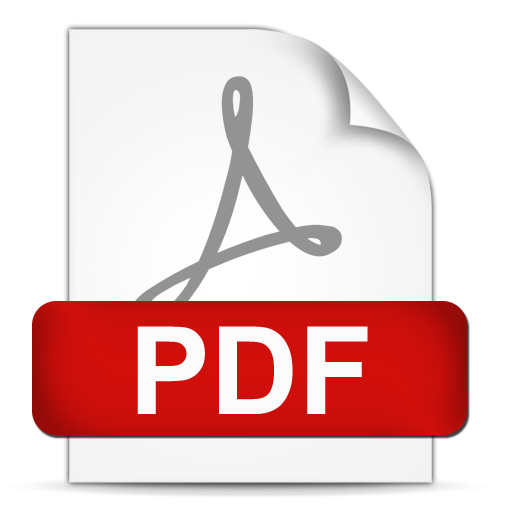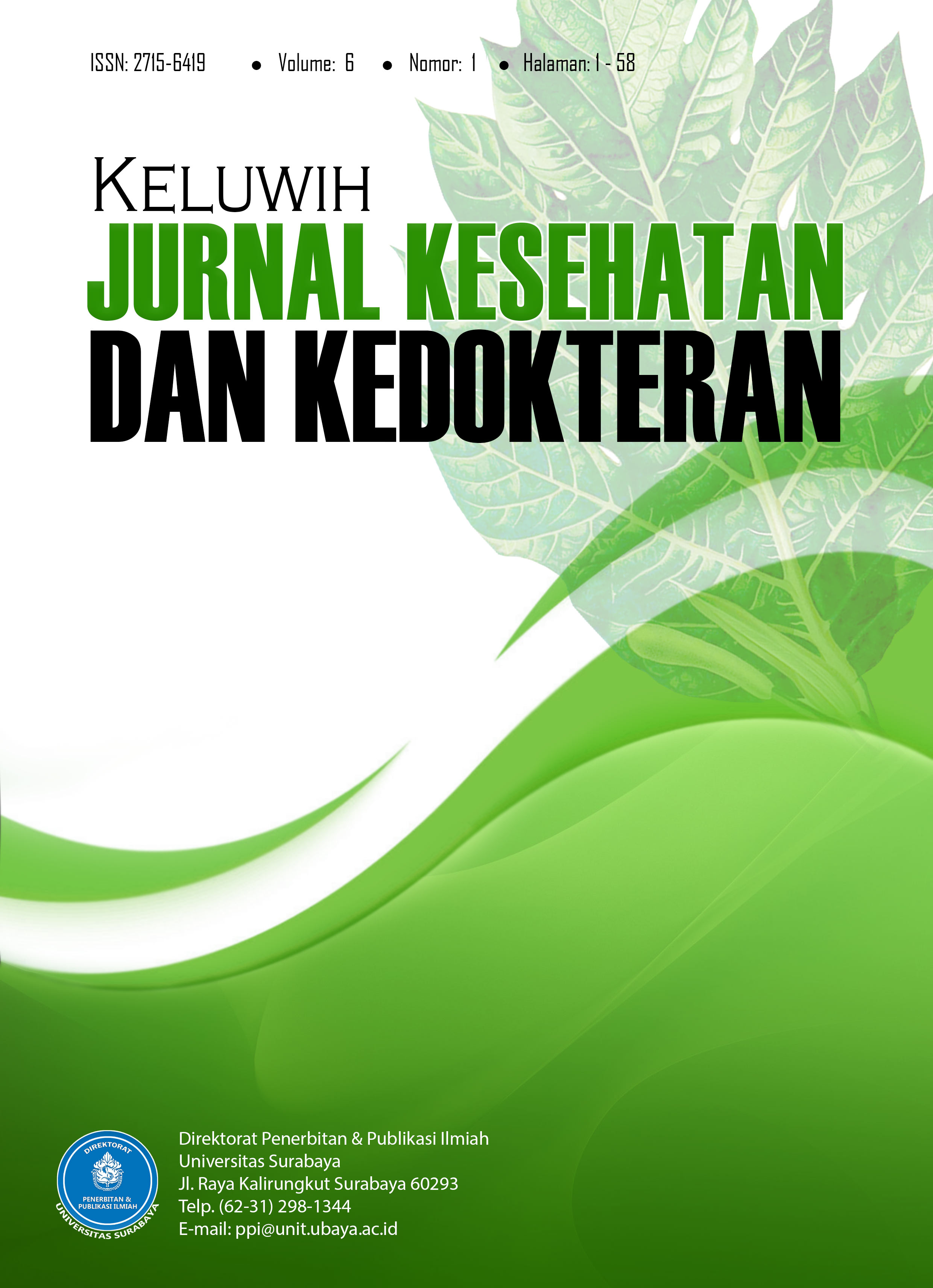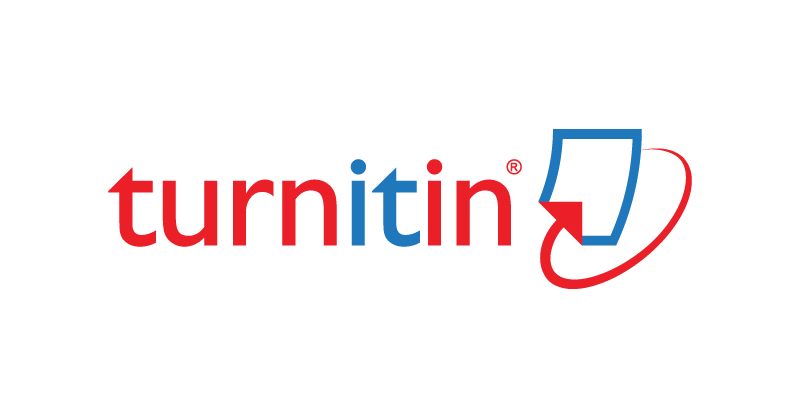Potensi Terapi Fitokanabinoid Mayor dalam Pengobatan Cedera Otak Traumatik: sebuah Tinjauan Literatur Farmakologis
 Abstract Views:
508 times
Abstract Views:
508 times
 PDF Downloads:
390 times
PDF Downloads:
390 times
Abstract
Abstract—Traumatic brain injury (TBI) is a global health issue that leads to long-term neurological deficits, including cognitive, motor, and mood disorders. Current TBI treatments primarily focus on symptom management, while neuroprotective therapies remain in the exploratory stage. One promising approach is the use of Cannabis sativa L., which contains phytocannabinoids, compounds with potential neuroprotective effects. Preclinical studies have shown that the major phytocannabinoids, cannabidiol (CBD) and tetrahydrocannabinol (THC), may have neuroprotective effects in TBI through mechanisms such as reducing excitotoxicity, neuroinflammation, and oxidative stress. These major phytocannabinoids are known to influence cannabinoid receptors (CB1 and CB2), which play roles in modulating inflammatory processes, reducing neuronal damage, improving motor and cognitive functions, and regulating recovery mechanisms in the blood-brain barrier and intracranial lymphatics. This review aims to explore the therapeutic potential of major phytocannabinoids in TBI treatment by highlighting the pathophysiological mechanisms of TBI and the neuroprotective effects of these compounds. A deeper understanding of the mechanisms of action of phytocannabinoids may pave the way for the development of phytocannabinoid-based therapies for TBI in the future.
Keywords: traumatic brain injury, neuroprotection, cannabis sativa l., major phytocannabinoids, cannabidiol, tetrahydrocannabinol
Abstrak—Cedera otak traumatik (COT) merupakan masalah kesehatan global yang menyebabkan defisit neurologis jangka panjang, termasuk gangguan kognitif, motorik, dan suasana hati. Pengobatan COT saat ini lebih difokuskan pada manajemen gejala, sementara pengobatan yang bersifat neuroprotektif masih dalam tahap eksplorasi. Salah satu pendekatan yang menjanjikan adalah penggunaan tanaman Cannabis sativa L. yang mengandung fitokanabinoid, senyawa yang memiliki potensi neuroprotektif. Metode yang digunakan adalah kajian literatur. Hasil kajian penelitian preklinik menunjukkan bahwa fitokanabinoid mayor yaitu kanabidiol (KBD) dan tetrahidrokanabinol (THC) dapat memberikan efek neuroprotektif pada COT melalui mekanisme pengurangan eksitotoksisitas, neuroinflamasi, dan stres oksidatif. Senyawa fitokanabinoid mayor diketahui mempengaruhi reseptor kanabinoid (RKB1 dan RKB2), yang berperan dalam modulasi proses inflamasi, pengurangan kerusakan neuron dan dapat memperbaiki fungsi motorik dan kognitif, serta mengatur mekanisme pemulihan pada sawar darah-otak dan limfatik intrakranial. Hasil kajian literatur menunjukkan bahwa tanaman Cannabis sativa L. yang mengandung fitokanabinoid mayor memiliki potensi dalam pengobatan COT. Pemahaman yang lebih dalam tentang mekanisme kerja fitokanabinoid dapat membuka jalan bagi pengembangan terapi berbasis fitokanabinoid untuk COT di masa depan.
Kata kunci: cedera otak traumatis, neuroproteksi, cannabis sativa l., fitokanabinoid mayor, kanabidiol, tetrahidrokanabinol
Downloads
References
Dewan MC, Rattani A, Gupta S, Baticulon RE, Hung YC, Punchak M, et al. Estimating the global incidence of traumatic brain injury. J Neurosurg. 2019;130(4):1080-97.
Maas AIR, Menon DK, Adelson PD, Andelic N, Bell MJ, Belli A, et al. Traumatic brain injury: integrated approaches to improve prevention, clinical care, and research. The Lancet Neurology. 2017;16(12):987-1048.
Corrigan JD, Selassie AW, Orman JA. The epidemiology of traumatic brain injury. J Head Trauma Rehabil. 2010;25(2):72-80.
Whiteneck GG, Cuthbert JP, Corrigan JD, Bogner JA. Risk of Negative Outcomes After Traumatic Brain Injury: A Statewide Population-Based Survey. J Head Trauma Rehabil. 2016;31(1):E43-54.
Howe EI, Andelic N, Fure SCR, Røe C, Søberg HL, Hellstrøm T, et al. Cost-effectiveness analysis of combined cognitive and vocational rehabilitation in patients with mild-to-moderate TBI: results from a randomized controlled trial. BMC Health Serv Res. 2022;22(1):185.
Ng SY, Lee AYW. Traumatic Brain Injuries: Pathophysiology and Potential Therapeutic Targets. Frontiers in Cellular Neuroscience. 2019;13.
Mechoulam R, Gaoni Y. Recent Advances in the Chemistry of Hashish. In: Ashurst PR, Bohlmann F, Farkas L, Gaoni Y, Kling H, Mechoulam R, et al., editors. Fortschritte der Chemie Organischer Naturstoffe / Progress in the Chemistry of Organic Natural Products / Progrès dans la Chimie des Substances Organiques Naturelles. Vienna: Springer Vienna; 1967. p. 175-213.
Martins SS, Levy NS, Bruzelius E, Segura LE. Cannabis legalization in the U.S. Where do we go from here? Trends Psychiatry Psychother. 2022;44(suppl 1):e20220001.
Al-Khazaleh AK, Zhou X, Bhuyan DJ, Munch GW, Al-Dalabeeh EA, Jaye K, et al. The Neurotherapeutic Arsenal in Cannabis sativa: Insights into Anti-Neuroinflammatory and Neuroprotective Activity and Potential Entourage Effects. Molecules. 2024;29(2).
Kaur P, Sharma S. Recent Advances in Pathophysiology of Traumatic Brain Injury. Curr Neuropharmacol. 2018;16(8):1224-38.
Sulhan S, Lyon KA, Shapiro LA, Huang JH. Neuroinflammation and blood–brain barrier disruption following traumatic brain injury: Pathophysiology and potential therapeutic targets. Journal of Neuroscience Research. 2020;98(1):19-28.
de Macedo Filho L, Figueredo LF, Villegas-Gomez GA, Arthur M, Pedraza-Ciro MC, Martins H, et al. Pathophysiology-Based Management of Secondary Injuries and Insults in TBI. Biomedicines. 2024;12(3):520.
Pacher P, Bátkai S, Kunos G. The endocannabinoid system as an emerging target of pharmacotherapy. Pharmacol Rev. 2006;58(3):389-462.
Onaivi ES, Ishiguro H, Gong JP, Patel S, Perchuk A, Meozzi PA, et al. Discovery of the presence and functional expression of cannabinoid CB2 receptors in brain. Ann N Y Acad Sci. 2006;1074:514-36.
Huestis MA, Boyd SJ, Heishman SJ, Preston KL, Bonnet D, Le Fur G, et al. Single and multiple doses of rimonabant antagonize acute effects of smoked cannabis in male cannabis users. Psychopharmacology (Berl). 2007;194(4):505-15.
Alger BE, Kim J. Supply and demand for endocannabinoids. Trends in Neurosciences. 2011;34(6):304-15.
Navarrete M, Araque A. Endocannabinoids Mediate Neuron-Astrocyte Communication. Neuron. 2008;57(6):883-93.
Kendall DA, Yudowski GA. Cannabinoid Receptors in the Central Nervous System: Their Signaling and Roles in Disease. Frontiers in Cellular Neuroscience. 2017;10.
Cristino L, Bisogno T, Di Marzo V. Cannabinoids and the expanded endocannabinoid system in neurological disorders. Nature Reviews Neurology. 2020;16(1):9-29.
Galiègue S, Mary S, Marchand J, Dussossoy D, Carrière D, Carayon P, et al. Expression of Central and Peripheral Cannabinoid Receptors in Human Immune Tissues and Leukocyte Subpopulations. European Journal of Biochemistry. 1995;232(1):54-61.
Stella N. Cannabinoid and cannabinoid-like receptors in microglia, astrocytes, and astrocytomas. Glia. 2010;58(9):1017-30.
Spiller KJ, Bi G-h, He Y, Galaj E, Gardner EL, Xi Z-X. Cannabinoid CB1 and CB2 receptor mechanisms underlie cannabis reward and aversion in rats. British Journal of Pharmacology. 2019;176(9):1268-81.
Navarro G, Morales P, Rodríguez-Cueto C, Fernández-Ruiz J, Jagerovic N, Franco R. Targeting Cannabinoid CB2 Receptors in the Central Nervous System. Medicinal Chemistry Approaches with Focus on Neurodegenerative Disorders. Front Neurosci. 2016;10:406.
Atwood BK, Mackie K. CB2: a cannabinoid receptor with an identity crisis. British Journal of Pharmacology. 2010;160(3):467-79.
Braun M, Khan ZT, Khan MB, Kumar M, Ward A, Achyut BR, et al. Selective activation of cannabinoid receptor-2 reduces neuroinflammation after traumatic brain injury via alternative macrophage polarization. Brain, Behavior, and Immunity. 2018;68:224-37.
Tanaka M, Sackett S, Zhang Y. Endocannabinoid Modulation of Microglial Phenotypes in Neuropathology. Frontiers in Neurology. 2020;11.
Katz PS, Sulzer JK, Impastato RA, Teng SX, Rogers EK, Molina PE. Endocannabinoid Degradation Inhibition Improves Neurobehavioral Function, Blood–Brain Barrier Integrity, and Neuroinflammation following Mild Traumatic Brain Injury. Journal of Neurotrauma. 2014;32(5):297-306.
Witkamp R, Meijerink J. The endocannabinoid system: an emerging key player in inflammation. Current Opinion in Clinical Nutrition & Metabolic Care. 2014;17(2):130-8.
Mackie K. Cannabinoid Receptors: Where They are and What They do. Journal of Neuroendocrinology. 2008;20(s1):10-4.
Martínez-Torres AM, Morán J. CB1 Receptor Activation Provides Neuroprotection in an Animal Model of Glutamate-Induced Excitotoxicity Through a Reduction of NOX-2 Activity and Oxidative Stress. CNS Neurosci Ther. 2024;30(11):e70099.
Fengqing S, Yu T, Fang X, Jiang L, Huang Z, Zuo Y, et al. GW27-e1192 CB1 receptor attenuate neurons apoptosis to improve the outcome of Win55, 212-2 inducing hypothermia after cardiopulmonary resuscitation in rats. Journal of the American College of Cardiology. 2016;68(16_Supplement):C188-C.
Rakotoarivelo V, Mayer TZ, Simard M, Flamand N, Di Marzo V. The Impact of the CB2 Cannabinoid Receptor in Inflammatory Diseases: An Update. Molecules. 2024;29(14):3381.
Zotey V, Andhale A, Shegekar T, Juganavar A. Adaptive Neuroplasticity in Brain Injury Recovery: Strategies and Insights. Cureus. 2023;15(9):e45873.
Kędziora M, Boccella S, Marabese I, Mlost J, Infantino R, Maione S, et al. Inhibition of anandamide breakdown reduces pain and restores LTP and monoamine levels in the rat hippocampus via the CB1 receptor following osteoarthritis. Neuropharmacology. 2023;222:109304.
Cifelli P, Ruffolo G, De Felice E, Alfano V, van Vliet EA, Aronica E, et al. Phytocannabinoids in Neurological Diseases: Could They Restore a Physiological GABAergic Transmission? International Journal of Molecular Sciences. 2020;21(3):723.
Laezza C, Pagano C, Navarra G, Pastorino O, Proto MC, Fiore D, et al. The Endocannabinoid System: A Target for Cancer Treatment. Int J Mol Sci. 2020;21(3).
Maurya N, Velmurugan BK. Therapeutic applications of cannabinoids. Chem Biol Interact. 2018;293:77-88.
Niesink RJ, van Laar MW. Does Cannabidiol Protect Against Adverse Psychological Effects of THC? Front Psychiatry. 2013;4:130.
Jiang H, Li H, Cao Y, Zhang R, Zhou L, Zhou Y, et al. Effects of cannabinoid (CBD) on blood brain barrier permeability after brain injury in rats. Brain Research. 2021;1768:147586.
Dong S, Zhao H, Nie M, Sha Z, Feng J, Liu M, et al. Cannabidiol Alleviates Neurological Deficits After Traumatic Brain Injury by Improving Intracranial Lymphatic Drainage. Journal of Neurotrauma. 2024;41(15-16):e2009-e25.
Ren Z, Iliff JJ, Yang L, Yang J, Chen X, Chen MJ, et al. 'Hit & Run' model of closed-skull traumatic brain injury (TBI) reveals complex patterns of post-traumatic AQP4 dysregulation. J Cereb Blood Flow Metab. 2013;33(6):834-45.
Iliff JJ, Chen MJ, Plog BA, Zeppenfeld DM, Soltero M, Yang L, et al. Impairment of glymphatic pathway function promotes tau pathology after traumatic brain injury. J Neurosci. 2014;34(49):16180-93.
Elmes MW, Kaczocha M, Berger WT, Leung K, Ralph BP, Wang L, et al. Fatty Acid-binding Proteins (FABPs) Are Intracellular Carriers for Δ9-Tetrahydrocannabinol (THC) and Cannabidiol (CBD)*. Journal of Biological Chemistry. 2015;290(14):8711-21.
Martínez-Pinilla E, Varani K, Reyes-Resina I, Angelats E, Vincenzi F, Ferreiro-Vera C, et al. Binding and Signaling Studies Disclose a Potential Allosteric Site for Cannabidiol in Cannabinoid CB2 Receptors. Frontiers in Pharmacology. 2017;8.
Santiago-Castañeda C, Huerta de la Cruz S, Martínez-Aguirre C, Orozco-Suárez SA, Rocha L. Cannabidiol Reduces Short- and Long-Term High Glutamate Release after Severe Traumatic Brain Injury and Improves Functional Recovery. Pharmaceutics. 2022;14(8):1609.
Wolf SA, Bick-Sander A, Fabel K, Leal-Galicia P, Tauber S, Ramirez-Rodriguez G, et al. Cannabinoid receptor CB1 mediates baseline and activity-induced survival of new neurons in adult hippocampal neurogenesis. Cell Communication and Signaling. 2010;8(1):12.
Esposito G, Scuderi C, Valenza M, Togna GI, Latina V, De Filippis D, et al. Cannabidiol Reduces Aβ-Induced Neuroinflammation and Promotes Hippocampal Neurogenesis through PPARγ Involvement. PLOS ONE. 2011;6(12):e28668.
Yi J-H, Park S-W, Brooks N, Lang BT, Vemuganti R. PPARγ agonist rosiglitazone is neuroprotective after traumatic brain injury via anti-inflammatory and anti-oxidative mechanisms. Brain Research. 2008;1244:164-72.
Yeisley DJ, Arabiyat AS, Hahn MS. Cannabidiol-Driven Alterations to Inflammatory Protein Landscape of Lipopolysaccharide-Activated Macrophages In Vitro May Be Mediated by Autophagy and Oxidative Stress. Cannabis and Cannabinoid Research. 2021;6(3):253-63.
Atalay S, Jarocka-Karpowicz I, Skrzydlewska E. Antioxidative and Anti-Inflammatory Properties of Cannabidiol. Antioxidants. 2020;9(1):21.
Soares RZ, Vuolo F, Dall'Igna DM, Michels M, Crippa JA, Hallak JE, et al. Evaluation of the role of the cannabidiol system in an animal model of ischemia/reperfusion kidney injury. Rev Bras Ter Intensiva. 2015;27(4):383-9.
Sales AJ, Fogaça MV, Sartim AG, Pereira VS, Wegener G, Guimarães FS, et al. Cannabidiol Induces Rapid and Sustained Antidepressant-Like Effects Through Increased BDNF Signaling and Synaptogenesis in the Prefrontal Cortex. Molecular Neurobiology. 2019;56(2):1070-81.
van der Horn HJ, Liemburg EJ, Aleman A, Spikman JM, van der Naalt J. Brain Networks Subserving Emotion Regulation and Adaptation after Mild Traumatic Brain Injury. Journal of Neurotrauma. 2016;33(1):1-9.
Jorge RE, Acion L, Starkstein SE, Magnotta V. Hippocampal Volume and Mood Disorders After Traumatic Brain Injury. Biological Psychiatry. 2007;62(4):332-8.
Treble-Barna A, Petersen BA, Stec Z, Conley YP, Fink EL, Kochanek PM. Brain-Derived Neurotrophic Factor in Pediatric Acquired Brain Injury and Recovery. Biomolecules. 2024;14(2):191.
Gustafsson D, Klang A, Thams S, Rostami E. The Role of BDNF in Experimental and Clinical Traumatic Brain Injury. Int J Mol Sci. 2021;22(7).
Bhatt D, Hazari A, Yamakawa GR, Salberg S, Sgro M, Shultz SR, et al. Investigating the cumulative effects of Δ9-tetrahydrocannabinol and repetitive mild traumatic brain injury on adolescent rats. Brain Commun. 2020;2(1):fcaa042.
Wang Y, Kuca K, You L, Nepovimova E, Heger Z, Valko M, et al. The role of cellular senescence in neurodegenerative diseases. Arch Toxicol. 2024;98(8):2393-408.
Song S, Kong X, Wang B, Sanchez-Ramos J. Administration of Δ9-Tetrahydrocannabinol Following Controlled Cortical Impact Restores Hippocampal-Dependent Working Memory and Locomotor Function. Cannabis and Cannabinoid Research. 2022;7(4):424-35.
Rostami E, Krueger F, Plantman S, Davidsson J, Agoston D, Grafman J, et al. Alteration in BDNF and its receptors, full-length and truncated TrkB and p75(NTR) following penetrating traumatic brain injury. Brain Res. 2014;1542:195-205.
Song S, Kong X, Wang B, Sanchez-Ramos J. Recovery from Traumatic Brain Injury Following Treatment with Δ9-Tetrahydrocannabinol Is Associated with Increased Expression of Granulocyte-Colony Stimulating Factor and Other Neurotrophic Factors. Cannabis Cannabinoid Res. 2022;7(4):415-23.
Touriño C, Zimmer A, Valverde O. THC Prevents MDMA Neurotoxicity in Mice. PLoS One. 2010;5(2):e9143.
Bales JW, Kline AE, Wagner AK, Dixon CE. Targeting Dopamine in Acute Traumatic Brain Injury. Open Drug Discov J. 2010;2:119-28.
Fishbein M, Gov S, Assaf F, Gafni M, Keren O, Sarne Y. Long-term behavioral and biochemical effects of an ultra-low dose of Delta9-tetrahydrocannabinol (THC): neuroprotection and ERK signaling. Exp Brain Res. 2012;221(4):437-48.
Wurzelmann M, Romeika J, Sun D. Therapeutic potential of brain-derived neurotrophic factor (BDNF) and a small molecular mimics of BDNF for traumatic brain injury. Neural Regeneration Research. 2017;12(1):7-12.
Shapira G, Israel-Elgali I, Grad M, Avnat E, Rachmany L, Sarne Y, et al. Hippocampal differential expression underlying the neuroprotective effect of delta-9-tetrahydrocannabinol microdose on old mice. Frontiers in Neuroscience. 2023;17.
Mahalmani V, Sinha S, Prakash A, Medhi B. Translational research: Bridging the gap between preclinical and clinical research. Indian J Pharmacol. 2022;54(6):393-6.
Seyhan AA. Lost in translation: the valley of death across preclinical and clinical divide – identification of problems and overcoming obstacles. Translational Medicine Communications. 2019;4(1):18.
CDC. https://www.cdc.gov/cannabis/about/state-medical-cannabis-laws.html 2024
Harimusti M, Mokorimban MAT, Gerungan CA. Sanksi pidana bagi pengedar narkotika golongan I menurut undang-undang nomer 35 tahun 2009 tentang narkotika. Lex Privatum. 2023;XI(5).
Anonim. Peraturan menteri kesehatan republik indonesia nomor 5 tahun 2023 tentang narkotika, psikotropika, dan prekursor farmasi. 2023.

This work is licensed under a Creative Commons Attribution-ShareAlike 4.0 International License.
- Articles published in Keluwih: JKK are licensed under a Creative Commons Attribution-ShareAlike 4.0 International license. You are free to copy, transform, or redistribute articles for any lawful purpose in any medium, provided you give appropriate credit to the original author(s) and the journal, link to the license, indicate if changes were made, and redistribute any derivative work under the same license.
- Copyright on articles is retained by the respective author(s), without restrictions. A non-exclusive license is granted to Kluwih: JKK to publish the article and identify itself as its original publisher, along with the commercial right to include the article in a hardcopy issue for sale to libraries and individuals.
- By publishing in Keluwih: JKK, authors grant any third party the right to use their article to the extent provided by the Creative Commons Attribution-ShareAlike 4.0 International license.

 DOI:
DOI:






